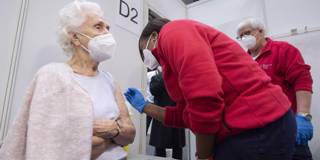
The Ethics of Prioritizing COVID-19 Vaccination
In the United States and some other countries, members of disadvantaged racial and ethnic minorities have a lower-than-average life expectancy, and therefore are under-represented among those most likely to die from COVID-19. How should policymakers weigh this and other factors specific to population sub-groups?
MELBOURNE – Now that COVID-19 vaccines are being rolled out, policymakers are wrestling with the question of how to distribute them quickly and equitably. There has been wide agreement that health workers should be vaccinated first, because they are needed to save the lives of those who are ill because of the virus. But deciding who should come next has spurred considerable debate.